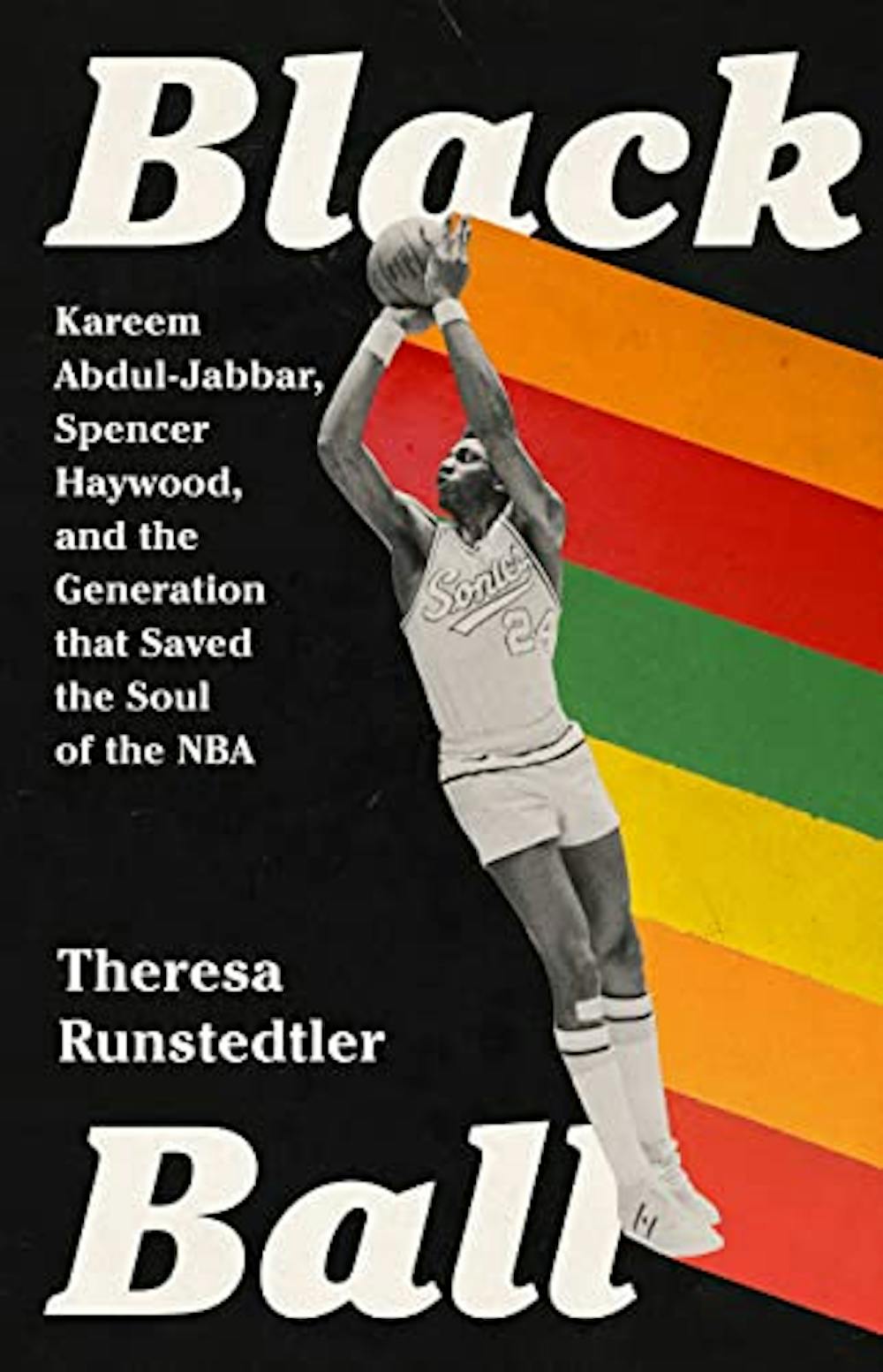Theresa Runstedtler, an associate professor of African American history at American University, discussed the labor battles of Black players in the NBA in a SciPop Talk titled “When The NBA Became Black” in Bender Library on Oct. 25.
Runstedtler explores how the antitrust cases of NBA players Oscar Robertson, Spencer Haywood and Connie Hawkins helped lay the groundwork for workers rights in the NBA today in her newest book “Black Ball.” She notes the importance of Black players' activism and resistance to NBA policies amidst the Black Power movement, and what led to narratives around Black criminality rising to the forefront of NBA discourse.
“Black players of the 1970s fought many hard-won battles for higher compensation, labor protections and the right to express themselves on their own terms,” Runstedtler said. “Battles that opened up space for activism and success.”
These lawsuits filed by Robertson, Haywood and Hawkins abolished the reserve clause which limited players to one team for their careers, the four-year rule which prohibited players from entering the league until they finished four years of college basketball and removed black-balling from the NBA.
Runstedtler pointed out that players’ antitrust suits came at a time in the NBA when racial integration was increasing in the league, with the NBA’s labor force going from 58% Black in the 1960s to 75% Black in the mid-’70s. The narratives surrounding Black players at this time were heavily influenced by these suits.
“What I found was that Black-led labor struggles in the first part of the decade really set up this discourse of the troublesome Black,” Runstedtler said. “This negative press really represented a much wider backlash against the growing dominance of Black players in this period.”
Much of this negative press stemmed from a 1980 Los Angeles Times article by reporter Chris Cobbs, in which he claimed that between 40 to 75 percent of the NBA was using cocaine. The article was released a year after the arrests of star players Eddie Johnson and Bernard King for cocaine use, and because the league was majority Black, it contributed to the “Black criminality” that Runstedtler spoke of.
“So ingrained was the idea that Black ball players had criminal tendencies that one NBA administrator even suggested having teams hold practice sessions at nearby maximum security prisons,” Runstedtler said.
It was yet another barrier for Black NBA players to overcome, and the criticisms of players did not remain isolated to what they did off the courts.
During the ‘70s, more flashy styles of basketball emerged with the evolution of what Runstedtler refers to as “playground ball.” Earl “The Pearl'' Monroe, a pioneer of this play, described playground ball as an inherited style born of the collective Black struggle. With resistance to change and worries about how its audience would react, the NBA placed itself in opposition to the untraditional style of play.
“Team and league officials positioned themselves as the protectors of the purity and integrity of the game amid this latest wave of ‘Black contamination,’” Runstedtler said.
Despite resistance from the NBA, these players continued to develop their styles and incorporate Blackness into the fabric of basketball. The defiance of labor practices that favored owners and development of unique play, in the face of constant criticism, has been essential to the game evolving into the global institution it is today.
American University’s men’s basketball head coach Duane Simpkins attended the talk and said Runstedtler’s book can offer college players context for the current state of the sport.
“A lot of our guys want to stay in sports, whether it be business or entertainment,” Simpkins said. “For them to have some knowledge of things like this, it can give them a foundation as to where everything originated from.”
As players of the past have paved the way for resistance and activism in the NBA, athletes today are reaping the benefits. Runstedtler notes that this groundwork that was laid, combined with unmediated access to the public through social media, gives players the ability to address issues in the sport more freely, in ways that athletes in the past couldn't.
“That didn’t exist in the period that I'm looking at,” Runstedtler said. “Everybody had to go through traditional media and they weren’t covered … There's more discussion now about the risks and labor of sport in a way that I haven’t seen it being talked about even 10 years ago.”
This article was edited by Penelope Jennings, Delaney Hoke and Abigail Pritchard. Copy editing done by Isabelle Kravis.





